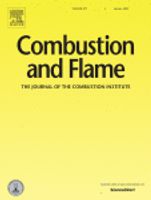US EPA
Learn about Dioxin | US EPA
January 28, 2014 - Counting around the carbon rings, those with chlorines at positions 2, 3, 7, and 8 are toxic (see figure 1). The dioxin-like PCBs have both biphenyl rings in the same plane (flat appearance), which allows them to act like dioxins in the body. PCDDs and PCDFs are not created intentionally but are produced as a result of human activities like the backyard burning ...
class of chemical compounds
Wikipedia
Dioxins and dioxin-like compounds - Wikipedia
October 16, 2024 - The Stockholm Convention banned the production and use of dioxins in 2001. PCDD/F-compounds were never synthesized for any purpose, except for small quantities for scientific research. Small amounts of PCDD/Fs are formed whenever organics, oxygen and chlorine are available at suitable temperatures. This is augmented by metal catalysts such as copper. The optimal temperature range is 400 °C (752 °F) to 700 °C (1,292 °F). This means that formation is highest when organic material is burned ...
ScienceDirect

The formation of dioxins in combustion systems - ScienceDirect
Flame chemistry in incineration systems involves the formation of many organic products of incomplete combustion, including chlorinated species such a…
WHO
Dioxins
November 29, 2023 - They are unwanted by-products of ... chlorine bleaching of paper pulp and the manufacture of some herbicides and pesticides. Uncontrolled waste incinerators (solid waste and hospital waste) are often the worst culprits of environmental release due to incomplete burning. Technology is available that allows for controlled waste incineration with low dioxin ...
Culturalheritage
Dioxin
Dioxin is produced when chlorinated compounds like vinyl (PVC) are burned, which is one argument against use of municipal incinerators for solid waste. It is also produced whenever groundwood pulp is bleached with chlorine, as it is in nearly every kraft mill. Kraft pulp is dark, and it takes a lot of bleaching to make ...
Epa
Human Health | Backyard Burning | Wastes | US EPA
Backyard burning is of particular health concern because it produces significant quantities of dioxins. Dioxins and "dioxin like" compounds are a group of 30 highly toxic chlorinated organic chemicals. They are produced naturally in small quantities, but are primarily the result of human activity.
ScienceDirect

The Role of Chlorine in Dioxin Formation - ScienceDirect
There is poor correlation between total chlorine in waste streams and formation of polychlorinated dibenzodioxin and polychlorinated dibenzofuran (PCD…
Osti
Chlorine vs. dioxins -- Control methods to minimize emissions ...
September 1, 1996 - The U.S. Department of Energy's Office of Scientific and Technical Information
State
Dioxin
Dioxins are a group of chemicals that form as unwanted byproducts from incomplete burning of household and industrial waste. They also can be produced during bleaching of paper pulp and the manufacture of certain chlorinated chemicals like polychlorinated biphenyls (PCBs), chlorinated phenols, ...
NCBI
Sources of Dioxins and Dioxin-like Compounds in the Environment ...
Estimates of polychlorinated dibenzo-p-dioxin and polychlorinated dibenzofuran sources made in EPA's draft inventory (EPA, 1998) indicate that domestic waste burning contributes more than 1,000 g toxicity equivalents (TEQ)/ y, and likely contribute significantly to current DLC releases (Gullett et al., 2001; Wunderli et al., 2000). DLCs are formed in chemical reactions that occur during the combustion of organic compounds in the presence of chlorinated ...
Illinois
Dioxins
What are dioxins and where are they found? Dioxins are a group of chemicals that form as unwanted byproducts from incomplete burning of household and industrial waste. They also can be produced during bleaching of paper pulp and the manufacture of certain chlorinated chemicals like polychlorinated ...
Basel
Chlorine , Combustion and Dioxins
The Basel Convention is a multilateral environmental agreement. Its aim is to protect human health and the environment against the adverse effects of hazardous wastes and other wastes based on their origin and/or composition and their characteristics.
CDC
Chlorinated Dibenzo-p-dioxins (CDDs) | Toxic Substances | Toxic ...
CDDs are a family of 75 chemically related compounds commonly known as chlorinated dioxins. One of these compounds is called 2,3,7,8-TCDD. It is one of the most toxic of the CDDs and is the one most studied. In the pure form, CDDs are crystals or colorless solids.
Oregonstate
What Is Dioxin? | Unsolved Mysteries of Human Health | Oregon State ...
October 21, 2021 - Dioxin is a general name for a large group of chemical compounds with similar structure. These compounds are made up of carbon, oxygen, hydrogen and chlorine atoms. The number of the chlorine atoms and their positions in the dioxin molecule are what determines the toxicity of different dioxins.
AZoM
Vinyl (Poly Vinyl Chloride) and Dioxins
April 19, 2019 - Dioxins are a family of chemicals often formed by the combustion of chlorine containing materials. Although global dioxin levels have declined since the 70's, PVC production has increased.
Moms Clean Air Force
Dioxins: What You Need to Know About These Toxic Pollutants
March 13, 2024 - But dioxins can also be created when chlorine is burned, like during waste incineration involving plastics. Burning plastic is just never going to amount to any good. Dioxins make the news when there are contamination incidents, including East Palestine, Ohio; many of the train cars contained ...
Acs
Dioxins: An Overview and History | Environmental Science & Technology
During WWII, organic products were introduced; for example, plastics became an important part of the chemical industry. Some of these products were organochlorine based, and in fact, some of them were chlorinated phenols. As waste materials containing these chemicals were burned, dioxins and furans ...
Wikipedia
Polychlorinated dibenzodioxins - Wikipedia
3 weeks ago - Dioxins are produced in small concentrations when organic material is burned in the presence of chlorine, whether the chlorine is present as chloride ions or as organochlorine compounds, so they are widely produced in many contexts.